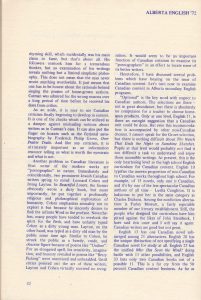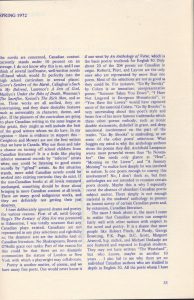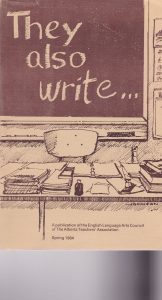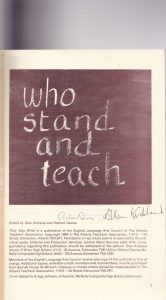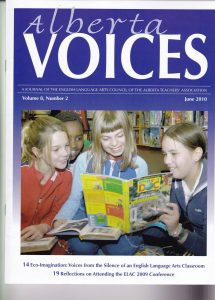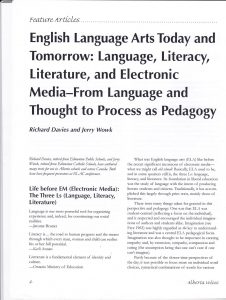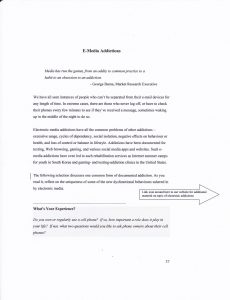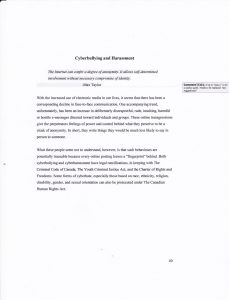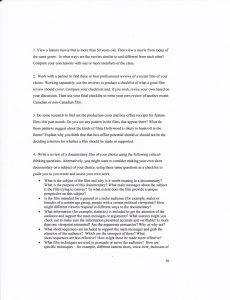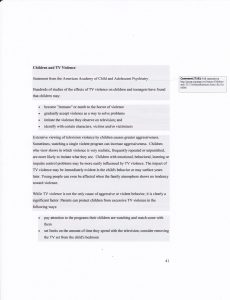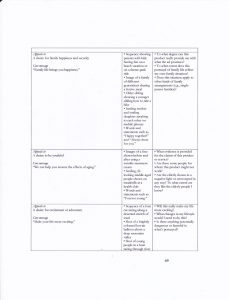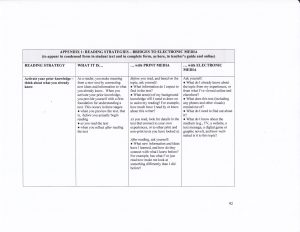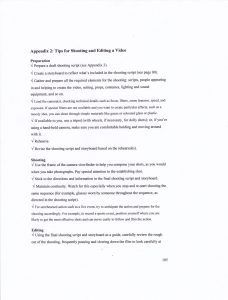(About as close to a mentor as I ever got, Glenn started my writing/publishing career. I had the honour to publish his “Winter Weather Forecast” in Inside Poetry and to do the eulogy at his funeral many years later.)
In 1972, my U of A Ed CI prof Glenn Martin asked me to contribute an article on “Canadian Content”–a topic I knew a fair bit about after a comprehensive, formative 1967 Canadian Literature course at the University of Winnipeg– to the ELA magazine he was editor of. It drew a lot of reactions from the AB field.
(excerpt from the piece)
Over the years, I contributed poems and articles to AB ELA publications including
(this was a strange incident in which I wrote a speech on the topic and gave it with Lynn in Ft. McMurray; she then submitted it verbatim to AB English and took all the credit (gulp!)–i.e., this was my speech and article 100%.)
(a rare Davies-Kirkland signing of a magazine funded by ELAC which featured senior high ELA teachers who wrote poetry)
(my new writing partner, Jerry Wowk, and I contributed this landmark article which described the state of ELA in 2010 and its likely directions.)
In 2003, a big project–I was asked by Alberta Ed’s Merv Thornton and Barbara Esdale, both friends and long-time Davies-Kirkland supporters, to suggest a novels list for senior high ELA along with write-ups on each suggested book)
In 2004, Edmonton Public hired me to write 10 double-sided Literacy Tipsheets from scratch; these were printed verbatim on the following topics:
-Film as Text
-Matters of Choice in Writing
-Metacognition: An Introduction
-Sharing a Personal Response
-Listening and Notetaking Skills
-Understanding Character
-Revise Your Writing
-How to Do a Critical Response
-Responding to a Photograph
-Writing a Film Review
These documents are still definitive; nothing like them has ever been published in Canada)
(sample half of one tipsheet)
…………………………….
The Books That Got Away
-1985: with Glen, a three book series for drama for use in senior high (drafted with a sample); there was a competition to do this in the province; our ELA principal-teacher-friend, the late Bob Cameron won out, but sales ended up being modest.
1995: Hamlet: a Shakespeare magazine submitted to Prentice-Hall by myself and film-friend Gerry; PH got cold feet after leading us down the garden path (a story destined to happen again); elsewhere in the blog, I have included samples from the magazine which had a lot of visuals, cartoons, and other humor and features like the following.
2003-4: a short story anthology for grade 9 which Jerry and I started for Harcourt; then the company just, unexpectedly, shut down; we had completed a lineup of good stories; ironically, there is still no good short story anthology for junior high out there in 2020.
2009-2010: a terrific anthology for small TO publisher Emond Montgomery which the company fecklessly chickened out on; Jerry and I worked again with my old friend-editor Tony Luengo (whom we had collaborated with on the Nelson handbook in an amazing three-month writing frenzy). Ironically, the finished book would have provided teachers, classes, and students in Canada with the ultimate critical thinking resource. Inside E-Media died a undeserved hard death when no other publishers wanted to pick it up.
Inside Electronic Media—Table of Contents
©2010 by Anthony Luengo, Richard Davies and Jerry Wowk
1: Our World of Electronic Media
- Introduction–overview, background: screen culture, media convergence
- E-Communication and Social Networking: SMS: texting, blogs, web forums
- E-Entertainment: CGI and virtual reality– avatars, mashups
- E-Information: search engines, wikis, e-books
- E-Media Literacy: managing media
2: Reading Media Texts
- Using common print reading strategies to make sense of e-media (c.f. Appendix for complete chart)
- Information, Ideas and Language of Print and E-Media texts
- Strategic Reading of Print Media
- Strategic Reading of E-Media:
- Reading blogs
- Navigating websites
- Reading videos and other forms with moving images, words and audioexample/explication: tv commercial
3: Understanding and Responding to Visuals
- Dealing with the language of visual texts; articulating stylistic patterns and techniques—this chapter presents four visual glossaries of terms and techniques relative to topic headings below
- Content and Composition in Still Visuals
- Understanding and Responding to Stills of Moving Visuals
- Watching and Responding to Images That Move—Focus on Shots, Movements, Sound
- Sound and Special Effects
- Storyboarding and Editing
- E-Media Issues
Each of the following issues are anchored by short articles; in some cases, pro and con alternate perspectives are presented for balance; generally, article tones are positive and sometimes humorous.
- Borrowing or Stealing?–covers ethics and legalities of plagiarism, copyright, intellectual property, and illegal downloading
- E-Media Addictions—relative to excessive usage, negative effects on behaviours and lifestyle
- Cyberbullying and Harassment—covers e-courtesy, bullying of different types, cyberhate, discrimination, prejudice, and human rights
- Media Displacement—more specific positive and negative effects on physical and mental health
- Media Distraction: Pro and Con
- Gatekeeping—covers vested interests and agendas as well as classification
- Truth and Untruth in E-Media—spin, e-news vs. real news, various manipulations such as un/truth of e-media visuals in digital era
- Retaining Privacy—privacy vs. openness/vulnerability; identity theft
- Forms of Mass Media
(N.B. the material on film in chapter 3 could be taught with the film material in this chapter if a teacher wanted to create a larger sub-unit on film.)
Mainly, this chapter presents an overview of the media sub-genres and discusses changes that have happened and are happening within each sub-genre; in particular, the effects of media convergence relative to the impact of smartphones and tablet computers is broadly considered.
- Journalism: Newspapers–brief review of newspaper features, a look at Internet impact, and consideration of subscriptions as a way to survival
- Journalism: Magazines—niche markets and e-magazines
- Film—recent advances, mainstream and indie films, the genre types, narrative and characterization in fictional films, film as commercial product, Canadian film and stars
- Television—growth of commercial tv, reality tv shows, emotional appeal of tv, children and tv violence, tv and Internet
- Internet—issues and trends, Internet’s impact, social networking, citizen or personal journalism, commercialization, private and personal security, convergence, capacity, cloud computing and Web 3.0
- Advertising
(N.B. Advertising is dealt with separately from e-media genres since it is not one of them and an entity unto itself that influences the genres.)
- Types of ads—commercial, government, PSA, political, etc.
- How Ads Try to Appeal to Target Audiences—types of appeals, examples and critical questions; also discussion/review of main elements and techniques ads use to reinforce appeals
- Branding—including product placement
- Consumer Awareness and Protection—resources and ad standards
- Adbusters: A Canadian Anti-Consumerist Perspective
Appendices:
- Reading Strategies—Bridges to E-Media: A tool for teachers and students to use when reading and viewing: 21 reading strategies—identified, how they can be used with print and e-media texts—questions/directions for application
- Tips for Shooting and Editing a Video
*The magazine was full of numerous illustrative examples in colour. There was also a website and accompanying video of examples and models that were written into the manuscript. I have to say that this was easily the best book I ever co-authored and the relationship with Tony and Jerry over the two years was very intelligent and focused.
Sample pages:
Woe and alas, this book may have been the best, most practical ELA book that was never published in Canada. It was a sad note on which to finish my ed publishing career, but, like all projects I learned a lot, totally believed in the project, and was grateful for the deep friendship that resulted. Yeah, after being led down the garden path one too many times, the last betrayal broke this camel’s back, and I retired from ed writing (48 years) and ed conferencing (30 years). What was left after that decision was much creative writing including two blogs and my long involvement with the Edmonton Stroll of Poets that still keep me very busy to this day.



